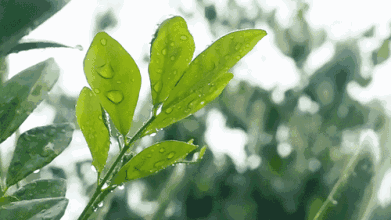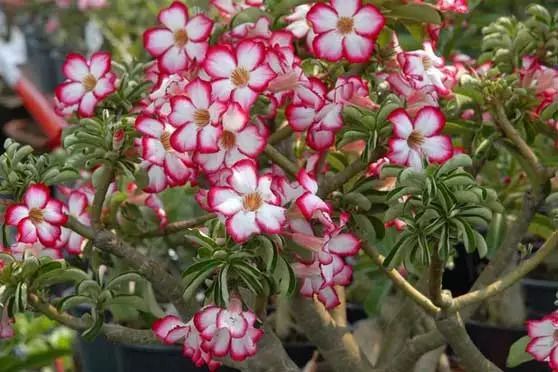Adhering to the spirit of heaven and earth and the beauty of nature

Tea, the spiritual grass of heaven, earth and nature, takes apart the word "tea" and its meaning is that people are in the vegetation. Tea, born in heaven and growing up on earth, adheres to the spirit of heaven and earth and the beauty of nature, and obtains the harmony of heaven and earth, which is formed by the combination of yin and yang.
Chen Zangqi, a great physician in the Tang Dynasty, said in "the remains of Materia Medica": "all kinds of medicine are the medicine for all diseases, and tea is the medicine for all diseases." Thus it can be seen that tea is not only as beautiful as described in du Ben's poems, but also very beneficial to people's health as said by Chen Zangqi.
And Yuan Zhen's poem "Tea" in the Tang Dynasty said: "Tea, fragrant leaves, buds, admirers, love monks." Grind and carve white jade and weave red yarn. Pan-fry the yellow core color, the bowl turns to the dust flower. Invite to accompany the bright moon after the night, and face the morning clouds alone before morning. If people are indefatigable in ancient and modern times, they will know how to boast when they are drunk. "
Tea
Yuan Zhen
Tea, fragrant leaves, buds
Adore the poet and love the monk.
Grinding and carving white jade
Luo weaves red yarn.
Pan-fried yellow core color
The bowl turns to dust.
Invite to accompany Mingyue after night
Face the morning clouds alone in the morning.
Wash all the ancient and modern people tirelessly
You can't boast when you're drunk.
Can slide to the left
We have to sigh the magic of tea, whether it is its cultural value, or the value of drinking! Chinese tea has spread to all parts of the world through various ways, making it a worldwide health drink and industry.
The essence of Chinese tea culture continues to take root, blossom and bear fruit all over the world, and integrate with the way of life, local customs and religious consciousness of the people of all nationalities in the world, forming a colorful tea culture of all ethnic groups in the world. Tea is not only one of China's important contributions to mankind and world civilization, but also one of the great contributions of the East to the world.
The fresh leaves of Fujian white tea are mostly made from early spring buds, and the processing process only goes through withering and drying procedures. Compared with other teas, Fujian white tea leaves retain a large number of flavor and nutritional components such as tea polyphenols, theanine, flavonoids, caffeine, soluble sugar, linalool oxides Ⅰ and Ⅱ, linalool, phenylethanol, geraniol and other aroma components, and their composition changes the least among the six major teas.
Tea absorbs less heat, the taste of tea is light, and its taste is cold and cool. it is a commonly used antipyretic medicine among the people, which has the effect of relieving summer heat, reducing heat and reducing heat and detoxification. Compared with other teas, white tea has more unique health effects in protecting oral health, anti-radiation, antibacterial and antiviral, inhibiting the activity of cancer cells and so on.
White tea is the bright pearl of the six major tea categories in China. White tea is a kind of light fermented tea, the processing technology is only withering and drying, its special processing process, so that white tea is now sold in Hong Kong, Germany, Japan, the Netherlands, France, Britain, Singapore, Switzerland and other places.
Fuding folk spread many interesting customs and life culture, ranging from respecting heaven and earth, paying tribute to heaven, Buddha and ancestors, to treating people and receiving guests. In Fuding, people cherish tea more than rice, and put tea in front of rice, which is called "Tea Brother Midi". And people also have great respect for tea, never pour tea dregs indiscriminately, tea dregs should be poured together with the water for washing dishes and pots, or poured into streams and rivers.
Seal the Baihao silver needle collected on Qingming Day and wait for the man in the family to get married, which is called "descendant tea"; seal the white peony collected on Qingming Day and marry her when the daughter of the family gets married, as "daughter tea".
Zhang Tianfu, a leader in the tea industry, published the investigation report of White Tea in Fujian Province in 1963, demonstrating: "White tea was first created by Fuding County." At that time, the silver needle was collected from the vegetable tea tree. After the large white tea was discovered in Fuding in about 1857, it began to make the silver needle from the big white tea bud in 1885, which is called Dabai, and for those who are collected from vegetable tea, it is called soil needle or Xiaobai.
Luo Shaojun, Chen rafter and many other experts studied Fuding white tea from many angles and aspects from historical origin, literature records and natural geographical conditions, and concluded that the source of Chinese white tea lies in Fuding.
As the birthplace of Chinese white tea. Fuding is located in the mid-subtropical monsoon climate zone, with obvious marine climate characteristics, with an average annual temperature of 18.5 ℃, an annual rainfall of 1669.5 mm, an annual relative humidity of 80%, and an average frost-free period of 228 days in mountainous areas. Southwest, northwest mountain rainfall is more, Mount Tai Mu is distributed in the northeast of the territory, shrouded in clouds all the year round, the average annual rainfall is as high as 2112.3 mm. Affected by the inner bays such as Qingchuan Bay and Shacheng Bay, the climate is obviously different from other tea-producing areas in the country.
The Fuding area is surrounded by streams, and the content is distributed to the southeast and west-east along the Taigra Mountains. The larger streams in the territory are Tongshan Creek, Chixi, Baibu Creek and Zhaolan Creek with a total length of 242.8 km, which is rich in water resources. the freshwater area of the city is 1340.3 square kilometers. The average annual water volume is 1.6856 billion cubic meters, of which groundwater is 550 million cubic meters. The water quality in the basin is clean, and the contents of heavy metals and harmful microorganisms are lower than the environmental standards of organic agricultural products.
The fertile and acidic soil is the foundation of good tea. The soil in Fuding is very suitable for growing tea, there are red soil, yellow soil, purple soil and alluvial soil, the PH value is between 4 and 6.3, generally around 5.0.
The origin of "Fuding Dabai Tea" and "Fuding Dahao Tea" is in Fuding. These two kinds of tea trees are also national tea varieties, which were identified as national varieties by the National crop Variety approval Committee in 1985, numbered GS13001 and GS13002, commonly known as "Huacha No.1" and "Huacha No.2".
These unique resource conditions have created the unique Fuding white tea.
Tea expert Luo Shaojun commented that the excellent quality of Fuding white tea is determined by its specific soil and water, specific microclimate, specific varieties and other inherent advantages, as well as specific traditional processing technology, specific brewing methods and other factors. "
- Prev

Desert roses that do not need to be watered often blossom and bear fruit only in sunny places.
Desert rose is a very eye-catching succulent plant, because it has swollen roots, but also can produce different colors of large flowers, larger than rose flowers, there are common crimson, white, yellow and other flowers, it in the temperature.
- Next

Five unique-looking indoor drought-tolerant potted plants that do not need to be taken care of for months
Most of the plants raised indoors can grow well without much care, but those who water the plants frequently are easy to die, because the indoor temperature change is very small and most indoor environments are not too.
Related
- Wuhan Hospital Iron Tree Blooming Result Was Instantly Frightened by the Gardener Master
- Which variety of camellia is the most fragrant and best? Which one do you like best?
- What is the small blue coat, the breeding methods and matters needing attention of the succulent plant
- Dormancy time and maintenance management of succulent plants during dormancy
- Minas succulent how to raise, Minas succulent plant pictures
- What are the varieties of winter succulent plants
- How to raise succulent plants in twelve rolls? let's take a look at some experience of breeding twelve rolls.
- Attention should be paid to water control for succulent plants during dormant period (winter and summer)
- Watering experience of twelve rolls of succulent plants
- Techniques for fertilizing succulent plants. An article will let you know how to fertilize succulent plants.

